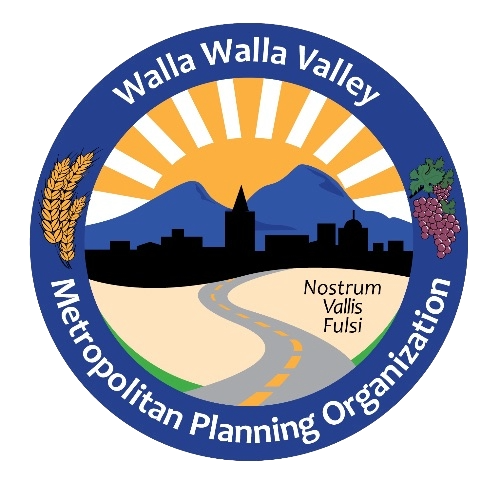Why are we doing this plan?
As a metropolitan planning organization, we update our transportation plan every five years to cover the next 25 years. This fiscally constrained plan outlines a multi-million-dollar investment in all modes of transportation projects for the region. It incorporates public feedback, environmental justice considerations, and the assessment of environmental impacts. The plan evaluates the current transportation infrastructure and services, forecasts population and employment growth, and assesses the associated mobility needs. Community collaboration during the plan's development is crucial for understanding the transportation needs and concerns of the area. The region’s goals, vision, and values, along with the results of needs and resource assessments, are documented in the long-range transportation plan.
Who's leading the way?
The Walla Walla Valley Metropolitan Planning Organization and Sub-Regional Transportation Planning Organization (WWVMPO/SRTPO) is the federally designated and state-recognized agency responsible for coordinating transportation planning activities and investments in accordance with federal surface transportation law and state growth management statutes.
What geography will the plan include?
Straddling the Oregon-Washington state line, the WWVMPO/SRTPO covers 1,300 square miles, including the Walla Walla-College Place urbanized area, the cities of Prescott and Waitsburg, small portion of northeastern Umatilla County, and most of Walla Walla County. Currently, the Walla Walla Valley is home to 66,169 residents and 29,300 jobs, having the region features an extensive transportation network.
Members of the WWVMPO/SRTPO are:
- City of Walla Walla
- City of College Place
- City of Prescott
- City of Waitsburg
- Confederated Tribes of the Umatilla Indian Reservation
- Valley Transit
- Port of Walla Walla
- Walla Walla County
- Umatilla County
- Washington State Department of Transportation, South Central Region
- Oregon Department of Transportation, Region 5
When will this plan update take place?
The planning process is already underway, with key milestones scheduled throughout 2025. The project began with data collection and analysis and will continue with community engagement, project identification and prioritization. The final plan is expected to be considered and approved by the MPO Policy Board in February 2026.
What is the process for updating this plan?
The Metropolitan Transportation Plan (MTP) documents the transportation planning process of the Walla Walla Valley Metropolitan Planning Organization (WWVMPO) and its partners. It includes recommended strategies, including projects, that will maintain, manage, and improve, the Walla Walla Valley transportation system over the next 25 years. Planning for the MTP is continuous, comprehensive and cooperative.
Planning for a transportation system that includes roadways, transit, bicycle facilities, pedestrian facilities, rail, and multimodal connections must reflect federal, state and local priorities. Just as important, it must also consider any negative impacts on our communities, the environment, and air quality. The plan will be developed with guidance from a set of regional goals established to advance the quality of life for residents in the Walla Walla Valley.
WWVMPO brings together local governments from Walla Walla Valley as part of its ongoing transportation planning process. It also coordinates with the Washington State Department of Transportation and the Oregon Department of Transportation. Independently and cooperatively, all of these entities collect data and identify transportation needs. WWVMPO then prioritizes and coordinates strategies and projects to meet transportation needs between now and 2050 through the following process:
- Identify regional goals
- Set measurable objectives to track progress in advancing the goals
- Monitor and forecast development, population, and employment growth, and changes to the transportation system
- Forecast travel demand
- Identify needs across the multimodal transportation system, including system management, system expansion, and the management of travel demand
- Consider strategies to be implemented and projects to be completed that will advance the transportation goals for the region as well as accomplish key factors as laid out in federal legislation
- Forecast the amount of transportation funding estimated to be available through 2050
- Identify strategies and projects to be included, considering the objectives, public input, and forecast of expected funding
- Measure the aggregate impact of the strategies and projects on the environment, air quality, and social equity
- Solicit and incorporate public review and comment throughout the entire process
- Monitor performance of strategies and projects through established objectives
How will the community and public be involved?
The Walla Walla Valley Metropolitan Planning Organization and Sub-Regional Transportation Planning Organization (WWVMPO/SRTPO) has made a commitment to the community to engage them in the project in the following ways:
- Consistently Inform the community of the project progress and opportunities for engagement
- Consult with stakeholders to understand their perspective on transportation challenges and concerns throughout the region.
- Collaborate with potential partners to understand what strategies should be prioritized for implementation that will advance the transportation goals for the region as well as accomplish key factors as laid out in federal legislation.




